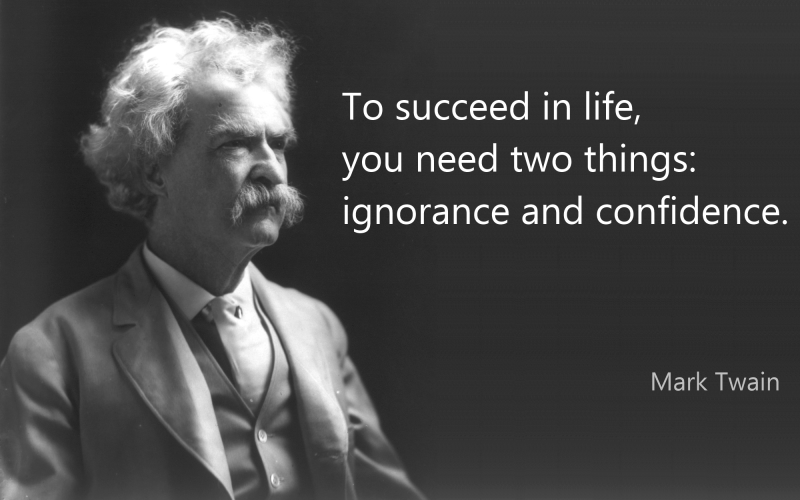How to Kill a Good Business Idea
The problem with “ideas” is this: To think of an idea means almost nothing. The ability to take an idea, vet it, put it through Lean Startup concepts like customer-discovery and customer-development, and more importantly to execute it is the real differentiation of an entrepreneur.
What good is an idea if you cannot give it a fair chance to be materialized?
Some ideas are worth killing. But “the process” should prove that. Sadly many ideas get killed because of some common mistakes people make before it even had a chance to spread its wings.
Here are some examples of these mistakes. Don’t make them!
Talking to the Wrong People About Your Business Idea
You get a flash of inspiration, an amazing idea, and you want to tell everyone you can think of–even your estranged uncle if you can corner him long enough to get him to listen. But asking just about anyone only leads to vague and non-actionable advice. Or worse, they tell you your idea will never work without giving a reason why.

The thing about asking family and friends (or even groups and organizations not equipped to deal with your idea), is they don’t have the tools or experience to tell you anything useful.
Pretenders are out there, fake mentors, self-proclaimed small business consultants and strategists, even some groups who are in the business of free-business-advice.
Instead, reach out to fellow entrepreneurs, startup founders and people in the industry you are targeting who will have suggestions to actually follow through with your idea and see if it will work.
You can even take it a step further by communicating with potential clients through “customer discovery” or attend meetup groups that are in the core of your business idea.
Talking to Yourself (in the wrong way)
It’s all about mind-set. The number one thing all successful entrepreneurs need is a robust and healthy mind-set. Negative self-talk, “impostor syndrome” and putting yourself down is common when you’re an entrepreneur, you have to over-come this problem with outside resources or seeking positive re-enforcement from within.
RESOURCE: Educate yourself about “imposter syndome” in this great Harvard Business School article: Overcoming Imposter Syndrome
Almost every entrepreneur has ideas that haven’t worked out–picking yourself up time-and-time again can start to feel like a lot of work. You wonder if maybe it’s just you; especially when you compare yourself to the facade of other businesses or entrepreneurs.
Most businesses fail. Most ideas will fail. Yes, odds are against you. But that should fuel you.
It’s almost impossible to succeed when there is no clear roadmap to take towards creating something that has never existed.
Learn to reprogram your thoughts, and have a paradigm shift. Your past failures are just useful learning experiences and every idea is worth exploring to its conclusion if its pulling you to do just that.
Delaying the Inevitable
If you keep delaying your business idea, guess what, your idea might as well have failed. If you never act on a good idea, the good idea will never exist–which can be just as damaging as failing.
Here is the thing about good ideas: If you have thought of it, chances are, so has somebody else. You can delay and tell yourself now is not the right time to do it, but someone out there hasn’t delayed and will beat you to the punch. Sure, they may have several failures along the way, but at least they didn’t put it off so long that it never came to fruition.
Good news is you can remedy this by starting right now!
Test your idea, ask around about it, or even just stop procrastinating and get it done right now (or after reading this post of course). First mover advantage is a real thing!
But so are timing and luck in bringing an idea to life. 😜
Being Over Confident
Confidence and tenacity are great common traits of most entrepreneurs. But don’t be cocky. Be humble. Just because you thought it, don’t be thinking your idea is the best left the way it is. The process should prove that, not your intellect. Otherwise you’ll turn people off and those may be the people you need to take it to the next level.
Often, little tweaks, little pivots will be necessary. Be humble. Don’t be a know-it-all.
The right dose of “I don’t know” can get you to better version of your original idea, especially in business and product development.

Keeping Ideas in Your Head
We tell ourselves all the time that we will remember what we were thinking about.
But not putting our ideas on paper is the worst form of sabotage.
Start keeping a notebook, pen and paper, napkin and pencil, whichever tickles your fancy. Once you start thinking on paper you can take your idea to the next level.
Read this useful article to learn more: The Productive Benefits of Organizing Your Ideas Outside Your Head
Don’t Swat at Your Idea; Until You SWOT It
Have you thought about your business idea from an objective stand point? It’s hard to see our own ideas clearly, with our pre-conceived judgments of what we can and can’t do. If you want to look at your idea from a ‘high-level’ stand point–that helps you see what you can do with your business in the real world–then SWOT is for you.
A SWOT analysis is a simple foundational tool to help oneself develop a strategy. It’s typically used in the Startup phase. But you can certainly do this in the idea-phase of your business as well.
SWOT is a quick analyses to look at every part of your business from each angle.

S – is for Strengths: List the strengths and weaknesses this business idea will have. For example: “Owner has a lot of experience in the field.” “There is a lot of funding.”
W – is for Weaknesses: Then list the weaknesses of your idea: For example: “We don’t know a lot about the marketplace for this product.” “We don’t have a large office space to work in.”
O – is for Opportunities: Now go ahead and list some of the opportunities your business could partake in. For example: “Networking with others in a similar field (because there are get togethers in the area).” “Owner knows someone who has a similar product.”
T – is for Threats: Lastly, look at your threats. To do this list things such as: “Who are your competitors.” “What negative outlook could your customers or clients have?”
Once you have your SWOT analysis in front of you, you can objectively think of ways you can both take advantage of the good, but also find strategy to counteract what is against the idea.
Useful reading here: SWOT Analysis: What It Is and When to Use It
– – – – –
* * * This blog post has been collaboratively written by Ky Ekinci, co-founder and managing partner of Office Divvy, and Samantha Carter, content manager. | Header image by Office Divvy intern, Oslyn Bryant.

- CoWorking Space for Remote Workers | Do you need a community? - January 10, 2020
- 5 Reasons Your Business Needs a Home Besides Your Home Office - December 19, 2019
- Chenzo Does Web So You Can Do You | Chenzo’s Lunch & Learn - October 17, 2019
Related Posts
- ← Expert Ramon Peralta Revealed his Brand Secrets | BrandU 2.0
- Chenzo Does Web So You Can Do You | Chenzo’s Lunch & Learn →











